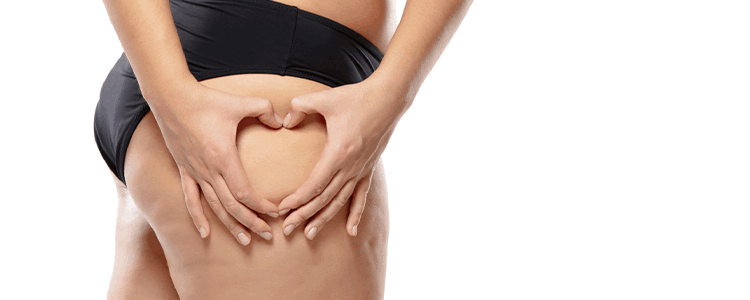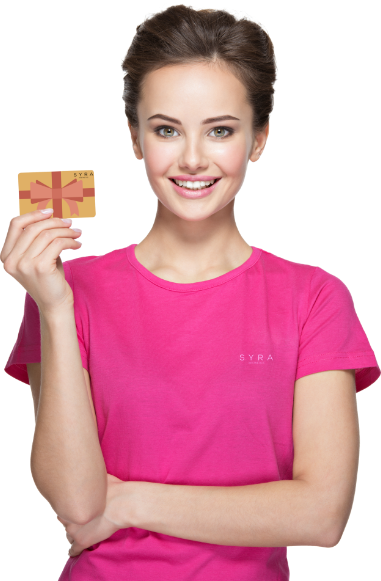Table of Contents
What is Cellulite?
Cellulite appears in bumpy areas on the body, especially over the buttocks. The medical term for cellulite is lipodystrophy and it is a condition that affects a large population of women. Also known as orange peel syndrome, it stems from the deposition of fatty tissue beneath the layers of the skin. It makes the skin look dimpled and bumpy and leads to many women seeking cosmetic solutions to solve this aesthetically displeasing problem.
What causes cellulite?
The exact cause of cellulite has been difficult to determine. There is no direct causative factor that has been identified which can be eliminated to resolve this problem. However, it is suggested that cellulite occurs when small protrusions of fat start moving from the subcutaneous fat layer into the dermal layer of the skin. This alteration causes the skin to look bumpy. Multiple factors like unhealthy lifestyle habits, genetic factors, environmental changes, and hormonal alterations may initiate or fasten the development of cellulite.
Why Cellulite is more common in women?
It has been noticed that men rarely develop this cosmetic problem. Cellulite is almost exclusively seen in women and has a propensity of worsening with age. The main cause of this disparity in cellulite development stems from the differences in the structure of the skin and its layers between men and women. Women have their fat cells arranged in the form of pockets in their subcutaneous fat skin layer which aids the expansion of fat cells into the dermal skin layer. However, men have a meshed, criss-cross pattern of connective tissue which permits fat cell protrusion laterally but does not allow its expansion into the dermal layer. That is why women are much more likely to suffer from the development of cellulite than men.
Grades of cellulite
The severity of cellulite development has been divided into grades and takes into account the appearance of skin and the number of dimples and bumps noticed.
Grade 1 (Mild): Mild cellulite appears as a bumpy appearance of the skin synonymous with an orange peel. People with mild cellulite have saggy appearing skin and no more than 4 superficial skin depressions.
Grade 2 (Moderate): Moderate cellulite is defined as having 5-9 moderately deep skin depressions making the skin look like cottage cheese.
Grade 3 (Severe): Severe cellulitis makes the skin look like a sleeping mattress with a wide number of deep skin depressions distributed all through the affected area.
How to get rid of cellulite?
There are various options that can be tried to help get rid of cellulite once it develops. Treatment options range from simple techniques that can be performed at home to advanced procedures which involve dermatologists and licensed aestheticians.
Home remedies
Many home remedies have been identified as causing improvement of cellulite but have little scientific evidence of guaranteed improvement. However, these methods can be employed along with lifestyle changes to cause slow improvement of cellulite.
- Exercise: Cellulite is caused by the disorganization of fat in the skin layers. Exercise regimens comprising aerobic training help mobilize the fat and eventually makes the skin look toned and less bumpy.
2. Superficial brushing: Dry brushing the skin with a loofah, body brush or simply your hands can cause visible improvement in cellulite. It is advised to gently brush the affected area with a tool or with fingers in an upward motion. It is especially helpful when long strokes are used, preferably right after a shower when the skin is fresh, smooth, and hydrated.
3. Employing edibles: Edible items like coffee and apple cider vinegar can also be used to combat cellulite. A few tablespoons of apple cider vinegar may help reduce cellulite. You can even massage the affected area to help promote lymph and blood flow and mobilize the fat. Coffee grounds can also be used to gently massage the skin and help reduce cellulite.
Topical Treatments
For a short-term and temporary solution for bumpy-looking skin due to cellulite, topical creams and preparations are suitable. The catch with this method is that these creams have to be applied regularly. One has to remember that these preparations just make the skin look hydrated and tighter and do not target the root cause of cellulite which is the fat underneath the skin layers.
Caffeine and retinol-containing creams are significant compounds commonly employed to help with cellulite. Caffeine promotes blood flow and retinol improves the quality of the outer layer of the skin, making cellulite appear less aesthetically displeasing.
However, retinol can cause skin sensitivity and allergic reactions and it is advised to always perform a patch test or to consult your physician before employing any topical aesthetic treatments.
Aesthetic Procedures
There are a variety of aesthetic procedures, which can be employed to help eliminate cellulite and make the body appear rejuvenated and toned.
Non-surgical methods
1. Cryolipolysis: This technique does exactly what its name suggests. It uses really cold temperatures to destroy the fat cells beneath the skin layers thus eliminating cellulite. It takes 35-60 minutes to perform the procedure and can cause up to a 20% reduction of fat in the affected area.
2. Acoustic wave therapy: This treatment makes the use of ultrasonic waves that are transmitted to the inner layers of the skin via a handheld device. It breaks down the fatty and fibrous components of cellulite and restores the natural contour of the skin.
Final note
Embracing yourself and accepting your body is key to a good and healthy life. What you choose to do with your body and the way you look is solely up to you. If you are happy and comfortable with the cellulite, then relax and sit back, but if you are not, then make some lifestyle changes or visit an aesthetician to get that boost of confidence. Stay safe and healthy!
Contact Syra Aesthetics for any concerns.

-
About The Author
Dr. Syra Hanif M.D.Board Certified Primary Care Physician
Dr. Hanif is the Director of Aesthetic Medicine. She is a board-certified physician in Aesthetic Medicine who specializes in using non-surgical alternatives in order to enhance one's appearance through Botox and fillers.
Read More


